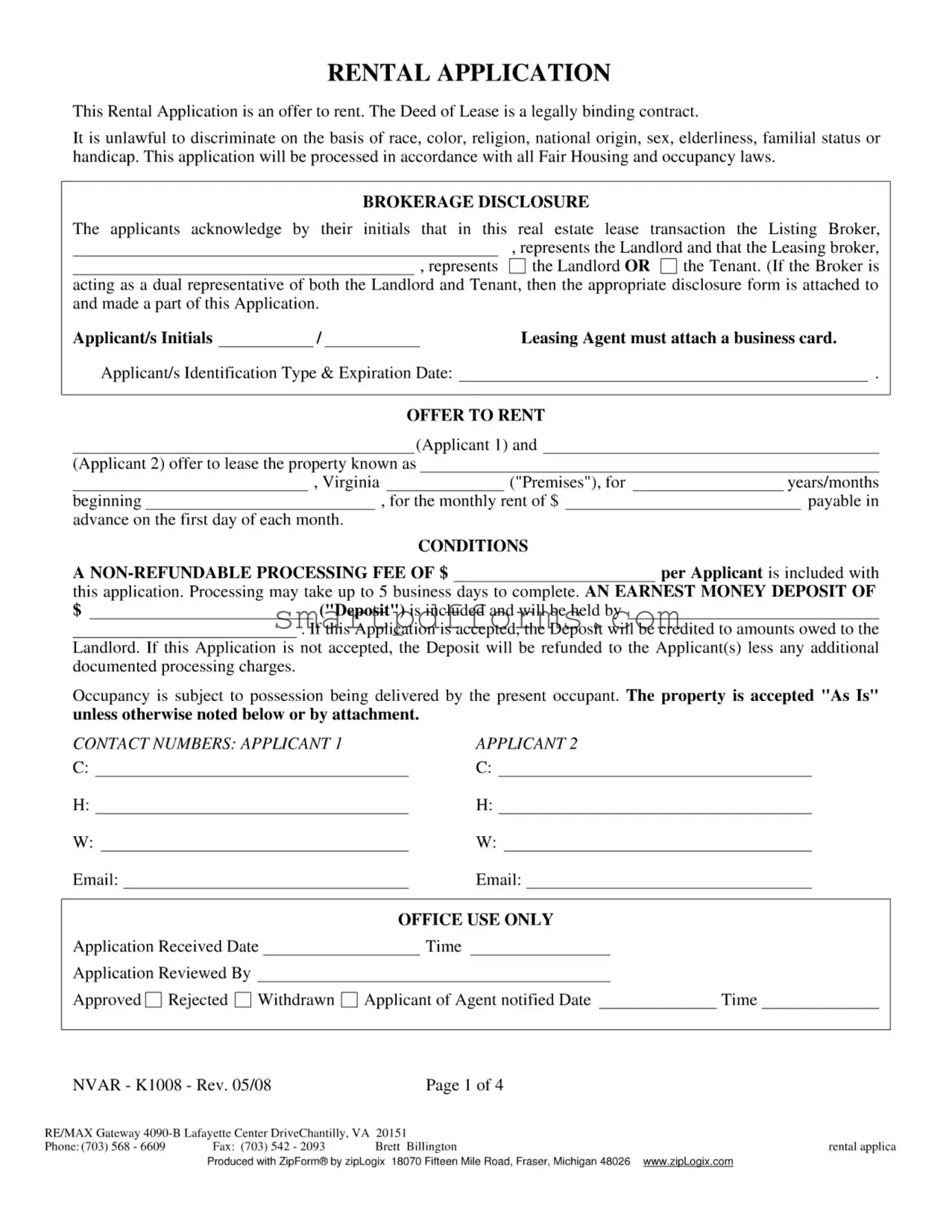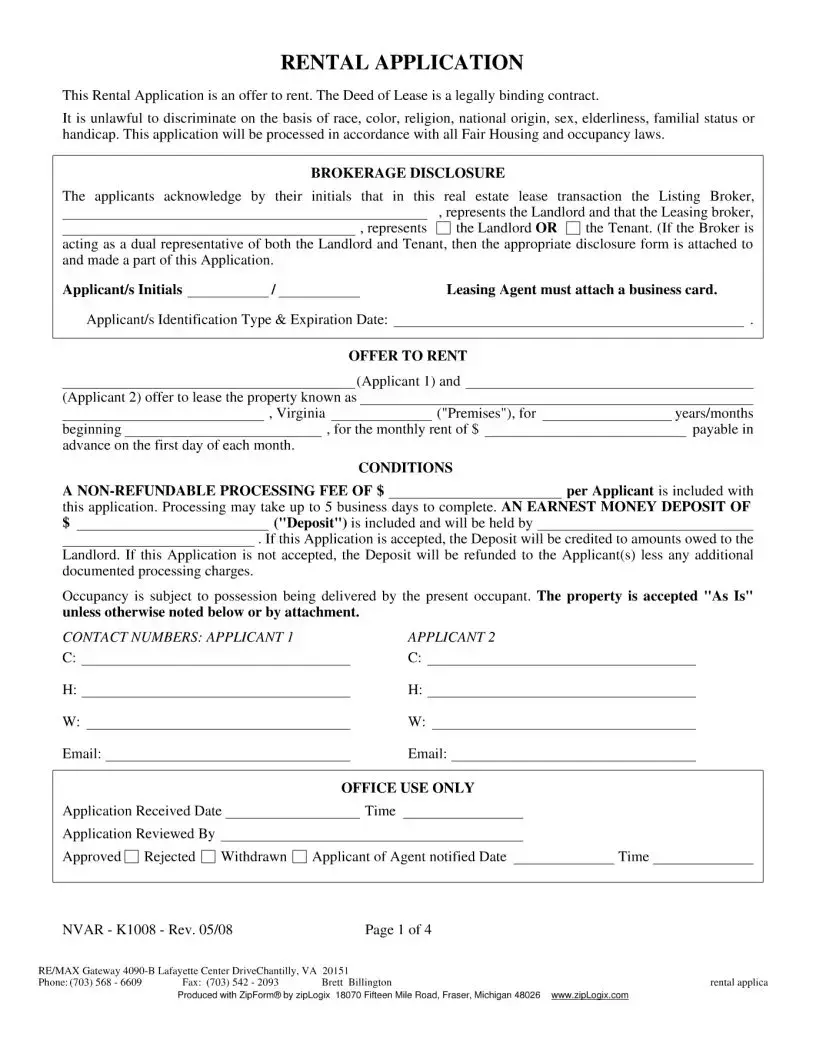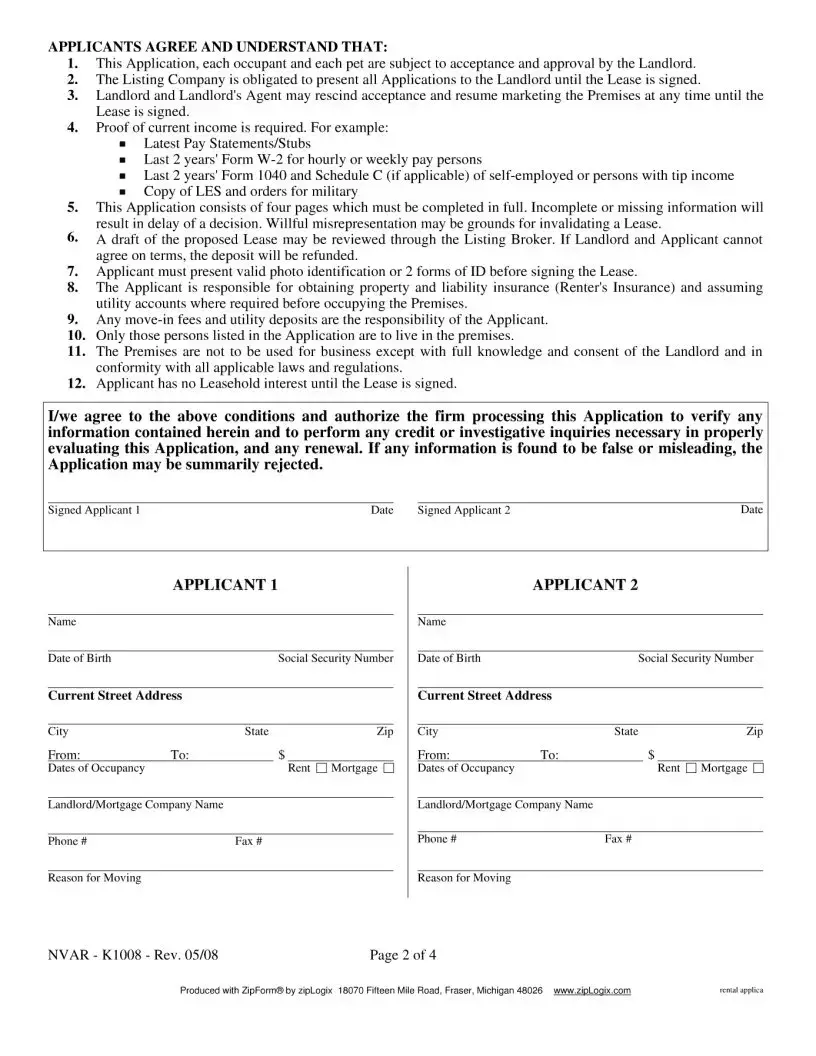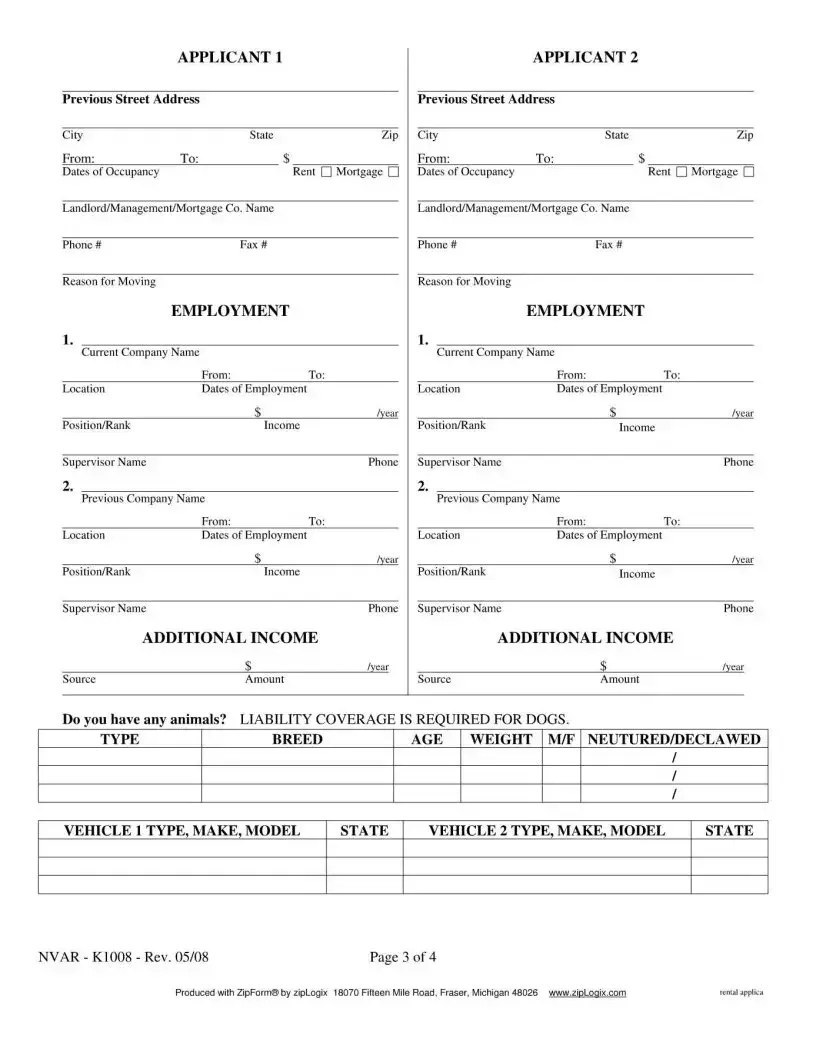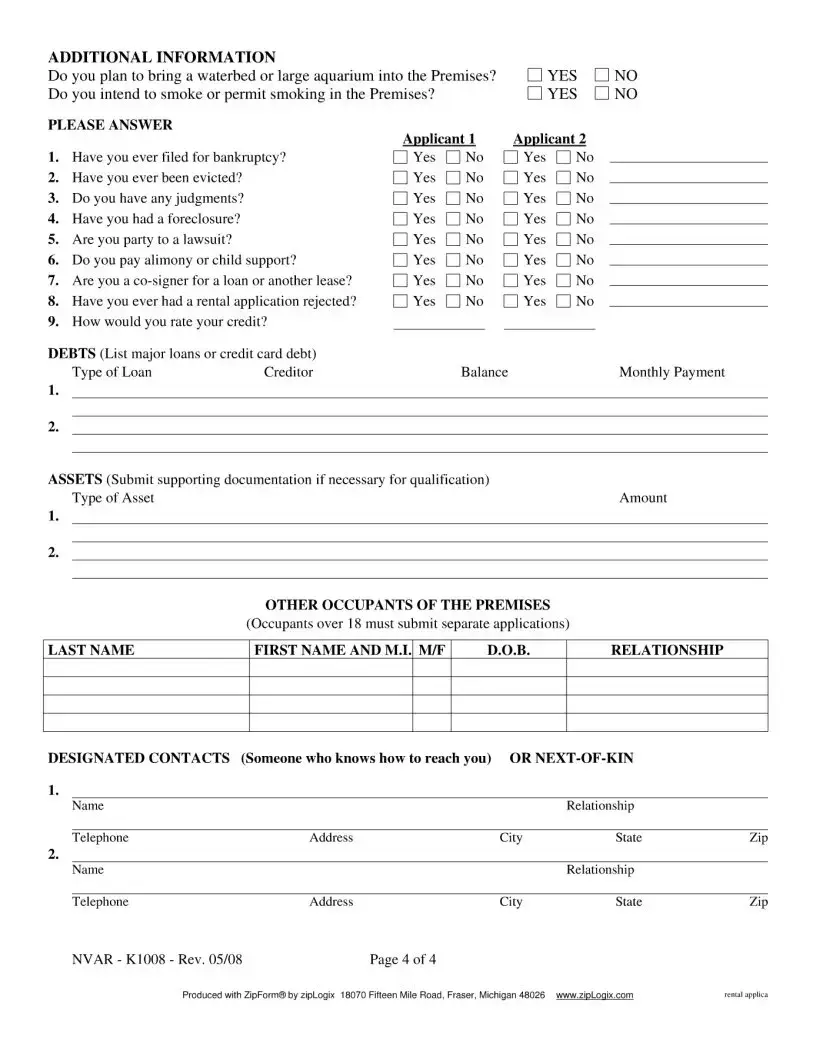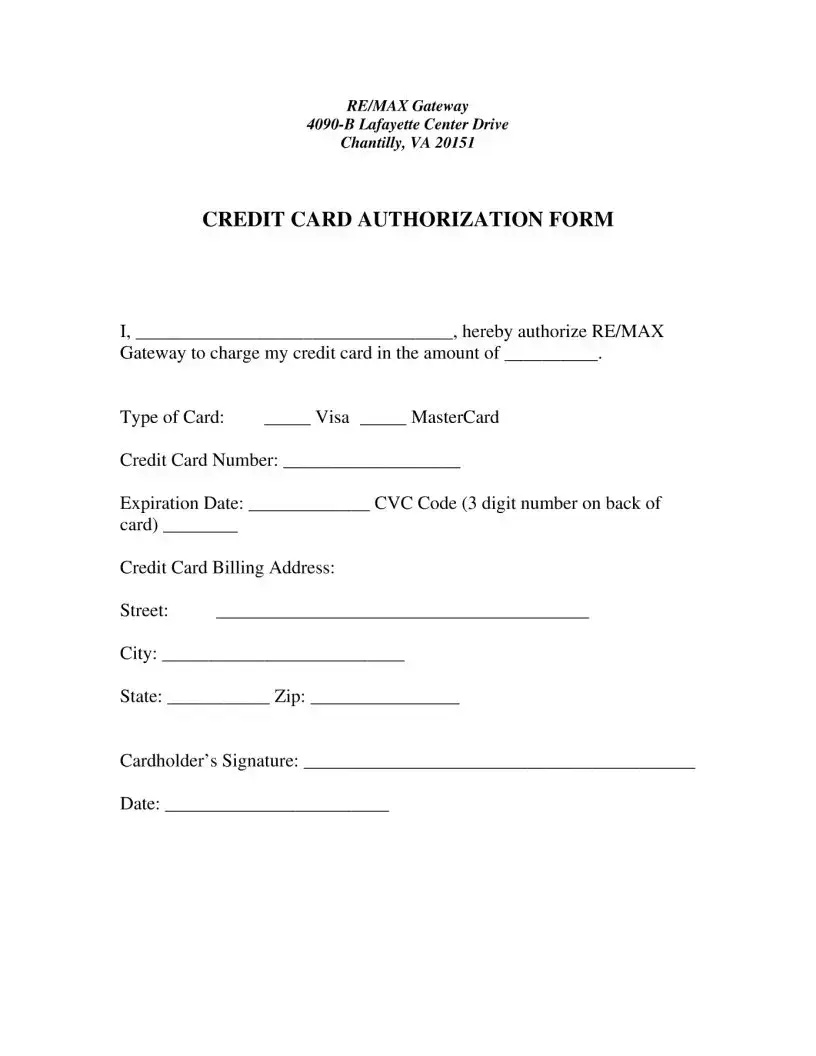What is the purpose of the NVAR Rental Application form?
The NVAR Rental Application form serves as an offer to rent a property. It is the initial step in securing a lease agreement, which is a legally binding contract between the landlord and the tenant. The application ensures that the process adheres to Fair Housing and occupancy laws, preventing discrimination based on race, color, religion, national origin, sex, elderliness, familial status, or handicap.
Who does the Listing Broker represent in the rental transaction?
By indicating their initials, applicants acknowledge that the Listing Broker represents the Landlord in the real estate lease transaction. If the Broker is acting as a dual representative for both the Landlord and Tenant, a specific disclosure form will be attached to this Application for transparency.
What fees are associated with the NVAR Rental Application?
Applicants are required to pay a non-refundable processing fee per applicant. Additionally, an earnest money deposit is included with the application, which will be credited to amounts owed to the Landlord upon acceptance of the application or refunded (less any additional documented processing charges) if the application is not accepted.
How long does it take to process the NVAR Rental Application?
The processing of the NVAR Rental Application may take up to 5 business days to complete. This timeframe allows the landlord or managing agent to review the application thoroughly and make an informed decision.
What documentation is required with the application?
Applicants need to provide proof of current income, which could include the latest pay statements or stubs, the last two years' Form W-2 for hourly or weekly pay persons, the last two years' Form 1040 and Schedule C for self-employed individuals, or copy of LES and orders for military personnel.
What happens if the NVAR Rental Application is incomplete?
Incomplete or missing information on the NVAR Rental Application can result in a delay of the decision. Willful misrepresentation of information may also be grounds for invalidating a future Lease agreement.
Is renter's insurance required before occupying the premises?
Yes, applicants are responsible for obtaining property and liability insurance (Renter’s Insurance) and assuming utility accounts where required before occupying the Premises. This is essential for protecting both the tenant's and landlord's interests.
Who can live in the premises according to the application?
Only those persons listed and approved in the NVAR Rental Application are permitted to live in the premises. This provision ensures all occupants are subject to the landlord's approval and comply with occupancy laws.
Can the premises be used for business purposes?
The premises cannot be used for business purposes without the full knowledge and consent of the Landlord and must be in conformity with all applicable laws and regulations. This is to ensure the property remains compliant with zoning laws and the lease agreement.
What happens if false or misleading information is found on the application?
If any information on the NVAR Rental Application is found to be false or misleading, the application may be summarily rejected. This helps maintain the integrity of the leasing process and ensures fairness for all parties involved.
